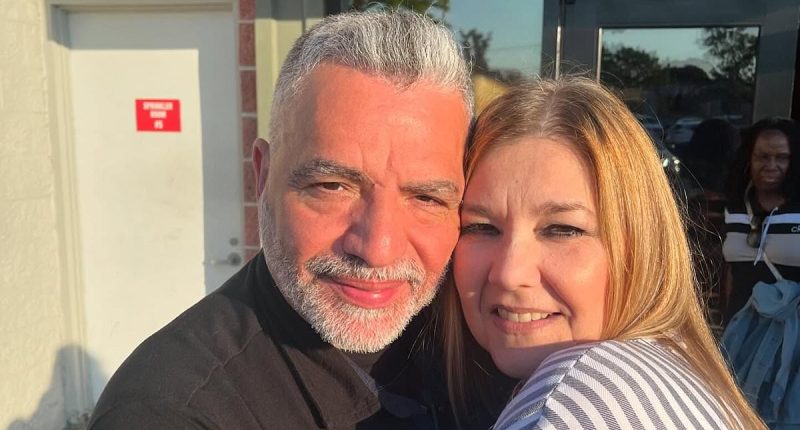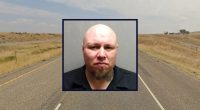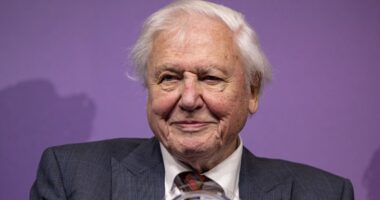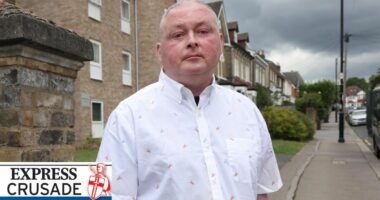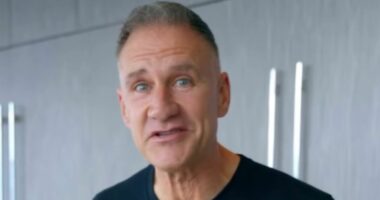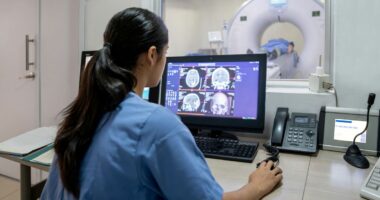Share this @internewscast.com
Nestor Montalvo had a pounding in his head that felt like a hangover headache, even though he hadn’t touched a drop of alcohol.
Soon after the pain onset, his vision began to blur and when he tried to stand up, the right side of his body was numb and he fell over. His wife immediately called 911 and the 61-year-old was rushed to the hospital.
Montalvo said: ‘Everything started spinning. I went to stand up, and I fell. I just didn’t understand what was going on. I couldn’t understand it. I didn’t know why I was feeling that way.’
The next thing he knew, the retired New York cop woke up to the sound of concerned whispers from family and doctors, murmuring about a ’15 percent percent chance of survival.’
It turns out, Montalvo was having an ischemic stroke, which occurs when a clot restricts blood flow to the brain and deprives it of oxygen. This can lead to death or life-long disabilities, as stroke is the leading cause of long-term disability in the US.
Signs of an ischemic stroke – which account for 87 percent of all strokes – include some symptoms Montalvo was experiencing: sudden weakness or numbness, difficulty speaking or understanding speech, vision problems, severe headache, dizziness and loss of coordination.
In the US, someone has a stroke every 40 seconds – about 795,000 people a year – and every three minutes, a person dies from a stroke, the CDC reports.
Montalvo added: ‘I was like “Oh my God, I’m going to die. I don’t even have a chance to say goodbye to anybody.”‘

Nestor Montalvo (third from the right) suffered a stroke in September 2024 at 61 years old

When Montalvo was having a stroke, he thought: ‘Oh my God, I’m going to die. I don’t even have a chance to say goodbye to anybody’
When a stroke occurs, ‘time is brain,’ Dr Taylor Kimberley, chief of neurocritical care at Massachusetts General Hospital, told CBS. She was not involved in Montalvo’s case.
This means the faster a person can receive treatment can make all the difference in avoiding brain damage. The longer a stroke goes untreated, the worse the damage can be.
When Montalvo arrived at Catholic Health’s Mercy Hospital in Nassau, Long Island, in September 2024, his symptoms immediately triggered a stroke protocol.
Once blood flow during a stroke is stopped, cells immediately start to die in major tissues, such as the cerebellum and brain stem, both of which regulate coordination and movement.
According to Premier Neurology, anywhere from seven to 65 percent of people having a stroke will experience some form of a headache.
In less than 10 minutes after arrival, Montalvo was assessed as a potential stroke patient, and five minutes later was hurried into a CT scan to confirm.
Doctors then administered a clot-busting medication called TNK, and Montalvo underwent a minor procedure to ensure the clot had been broken up and would not reoccur.
Following the initial procedure, Montalvo remained critical as his vocal chords stopped working and he underwent a tracheostomy – a surgery in which an opening is made in the throat and a tube is inserted to help with breathing.
He couldn’t talk or swallow for a month.

Montalvo underwent rigorous speech therapy to strengthen his throat in order to be able to speak again
For the following six weeks, Montalvo underwent an hour of speech therapy a day and did exercises to strengthen muscles in the mouth and throat.
When his tracheostomy tube was finally removed, he underwent three more procedures to repair his throat and was eventually able to enjoy a Thanksgiving meal with his family.
Now, nearly a year later, life for Montalvo is returning somewhat back to normal, although he continues to use a cane to walk and have outpatient treatment.
He hopes to further his progress, however, telling CBS that recovering was harder than getting through the stroke itself.
He said: ‘You take life for granted, and then when something like this happens, it wakes you up.
‘You hear people talk about it, and it just sounds like it’s not going to happen to you. All of a sudden, it happens to you.’
